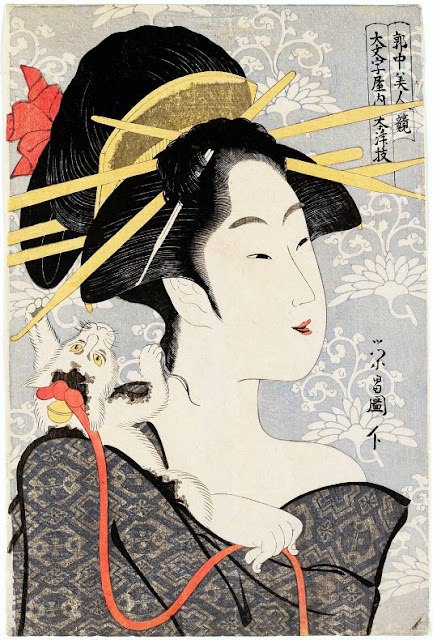 |
| Hirokage: Head of a Tiger Eating a Rooster |
The somewhat confusing title of this print is Head of a Tiger Eating a Rooster. It is from 1860 and the artist is Utagawa Hirokage, who was active between 1855 and 1865. He was one of Hiroshige's students.
Quite clearly, this is not a tiger, but a leopard. There are other ukiyo-e prints as well, depicting leopards, where they are also called tigers in the title. In Japan of that time, they obviously believed that leopards were female tigers.
Quite clearly, this is not a tiger, but a leopard. There are other ukiyo-e prints as well, depicting leopards, where they are also called tigers in the title. In Japan of that time, they obviously believed that leopards were female tigers.


